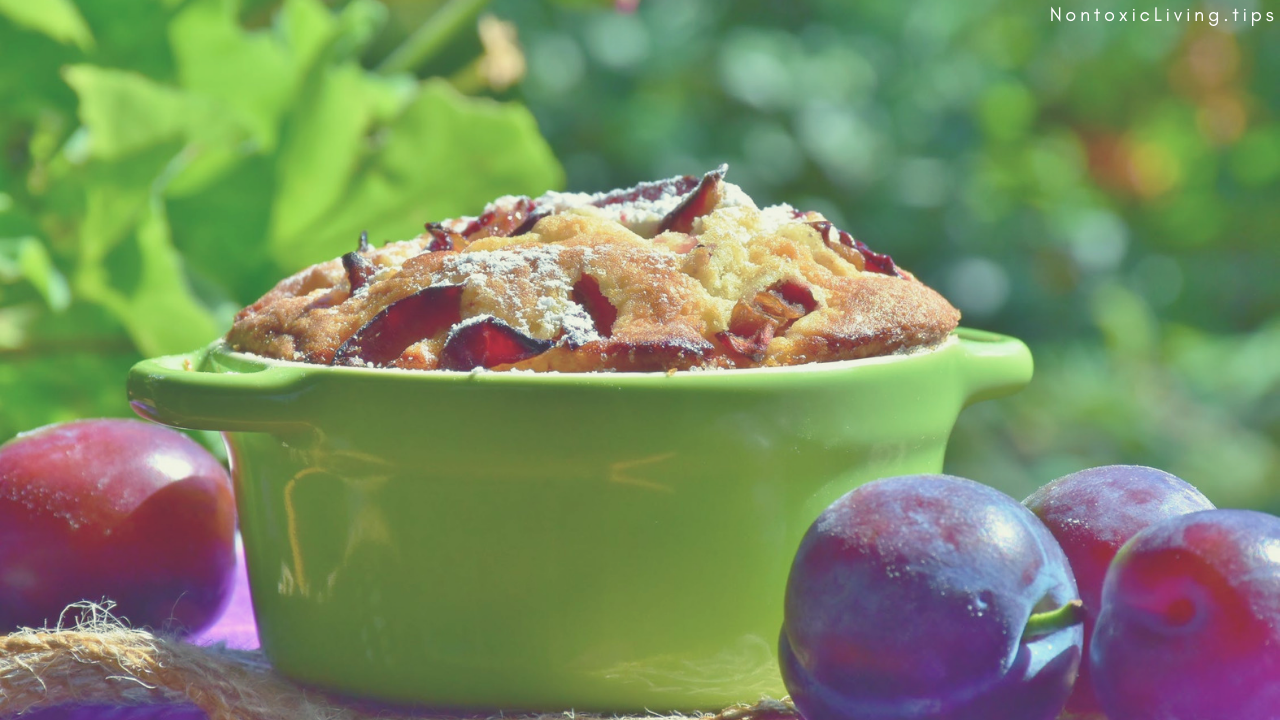
Nontoxic Ceramic Cookware: How to Choose and Use It Safely
Nov 19, 2018by Angela Cummings
There’s a lot of confusion about nontoxic ceramic cookware. It’s common to wonder, “is all ceramic cookware nontoxic?”
What Is Ceramic Cookware?
Ceramic cookware is traditionally made of clay that is fired (in a kiln) and glazed. Ceramic is one of the most widely accepted nontoxic materials and considered among the healthiest.
However, not all cookware that is advertised as ceramic is nontoxic. Here’s where it can be confusing.
There are different types of ceramic cookware.
- 100% Ceramic. The traditional method of clay that is shaped, fired, and glazed constitutes 100% ceramic cookware.
- Ceramic coated metal. This is where the pot or pan is metal (aluminum or stainless steel) and the interior is coated with ceramic. These types of ceramic coated cookware are often made of chemical finishes and heavy metals.
- Lead-free ceramic. Both 100% ceramic and ceramic coated metal cookware can contain lead in the glaze. To address this concern, some manufacturers use a lead-free glaze.
Pros And Cons of Ceramic Cookware
Pros
100% ceramic cookware has many benefits:
- Heats evenly. Ceramic pans heat evenly and therefore cooks food evenly.
- Keeps food warm. After removing from the heat, ceramic pans stay warm for about 15 minutes and keep food warm too without overcooking. It’s so convenient when waiting for children to wash their hands before dinner!
- Uses low to medium heat. Heating food on low or medium heat has health benefits. The risk of developing high blood pressure was 17% higher for people eating food that was charred or exposed to high temperatures, according to preliminary research from Harvard's T.H. Chan School of Public Health.
- Easy to clean. Ceramic has a natural non-stick quality to it. For foods that slightly stick, soak cookware for a few minutes and it wipes clean.
- Oven safe. Most can be used for baking casseroles or other foods in the oven.
- Some are safe for the stove. Some cookware can be used on a stove top; be sure to check the manufacture instructions to see if your specific ceramic can be used on the stove.
- Storage. Cookware made of ceramic can be used to store leftovers in the fridge or freezer. No additional dirty dishes to wash!
Cons
There are a few disadvantages of ceramic cookware, though. Here are some:
- Longer cook times. Since food cooks on low to medium heat, it takes longer to cook.
- Frozen foods are too cold. Food that is cooked from a frozen state may cause ceramic pans to break. The temperature difference between the frozen food and warm stove may be too great and too quick of a temperature change.
- Durability. Ceramic cookware can be durable and last a long time if cared for properly. If it becomes scratched it may not last as long.
- May scratch. Some ceramic cookware may scratch if metal utensils are used.
Which ceramic cookware is safest?
Cookware made of 100% ceramic and lead-free glaze is widely accepted as one of the healthiest options for nontoxic cookware.
Xtrema is one example of a manufacturer that makes 100% ceramic cookware that is lead-free. According to the company, its cookware is "safely free of toxic elements" and does not leach chemicals into food.
How to Cook with Nontoxic Ceramic Cookware
Ceramic is a nontoxic cookware that is among the safest options, but it comes with a small adjustment in cooking methods.
Cooking eggs and ground chicken is pretty standard since they’re usually cooked on low to medium heat and fill the pan surface completely.
Since ceramic pans hold heat, you can turn off the heat a few minutes earlier than usual and food will continue to cook.
Here are a few other cooking tips:
- Don’t leave the pan empty or partially empty while heating. Add water so that it covers the bottom of the pan.
- Boil water on medium heat instead of high heat. As mentioned previously, cooking on high heat can break the pan.
- Use wooden spoons and mixing utensils when cooking and serving food in ceramic. Metal can scratch and damage the ceramic.
- Avoid stacking pots and pans in order to avoid scratching or chipping them. The bottoms of ceramic pans can be a little rough and cause scratching of other pans.
- Don’t drag ceramic pans across the stove top. Since the bottoms may be rough, they could scratch glass stove surfaces.
- Cook on low or medium heat and watch your food. Even on low or medium heat, ceramic cookware gets hot enough to burn food after it’s been heating a while. Check on foods often while getting comfortable cooking with ceramic so that they don’t burn.
- Check for lead. Since some ceramic glaze can contain lead, be sure to find cookware that is lead-free or meets U.S. lead safety standards for cookware.
Conclusion
Cookware made of 100% ceramic and lead-free glaze is widely accepted as one of the healthiest options for nontoxic cookware. The slight adjustment to cooking methods is a worthwhile change to make in exchange for nontoxic cookware.
Stay connected with nontoxic lifestyle news and updates!
Receive our free Ruan Living Nontoxic Cleaning Guide when you join our email list.
Don't worry, your information will not be shared.
We hate SPAM. We will never sell your information, for any reason.








